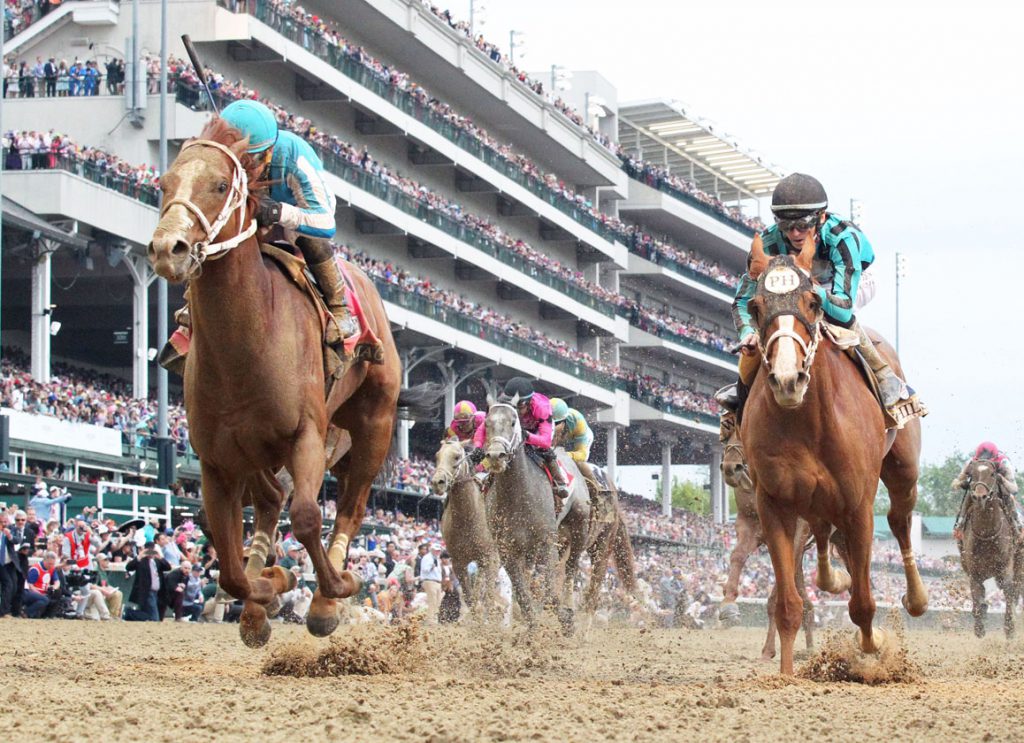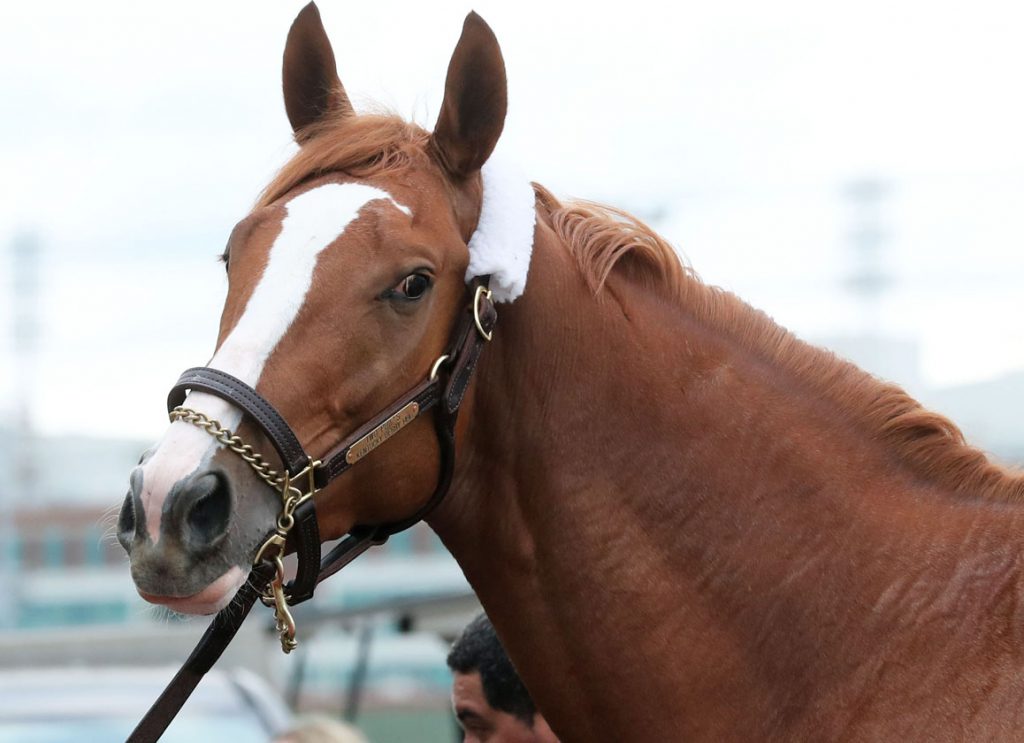Nostalgia, they say, isn't quite what it used to be. In times past, it was not so much a wistful state of mind as an outright medical condition. The Union Army in the first two years of the Civil War reported precisely 2,588 cases, no fewer than 13 of which proved fatal. And I must admit to some concern that this may in fact be the version to which I am destined to succumb, nailed into the same coffin as the five-week Triple Crown.
The whole premise of nostalgia is irretrievability: the yearning for a time or place that can't be revisited. (Very often, perhaps, because it never existed in the first place.) This morbidity is suggested in the Greek stems of the word: nostos, homecoming, and algos, pain or distress. Unfortunately, while the first of these is doomed to remain notional, the second can even be national. It spills over into the here and now, corroding the happiness not just of individuals but whole societies. All round the world, we see populists promising to renew some golden age by restoring lapsed imperial or demographic boundaries.
But that observation obliges me to ask myself whether I'm doing anything so very different, in stubbornly resisting the groundswell towards Triple Crown reform?
With a solitary Kentucky Derby runner deigning to line up for the second leg of the series, for the first time since the current schedule was adopted in 1969, many whose opinions I respect appear to be accepting that there is no longer any point trying to turn back the side. They look at the seven runners in the GI Preakness S. on Saturday, and say the time has come to yield principle to pragmatism.
Well, they may be right. But first, I have a couple of questions. One is exactly where we can find this putative engagement with a disaffected wider public? Is it from having more competitive Triple Crown races, or is it from the romance of the quest itself?
For a long time, during the drought between Affirmed and American Pharoah, we were told (despite several extremely close misses) that the assignment lay beyond the modern Thoroughbred and that we were duly squandering our best chance of engaging fan attention. On that basis, however, the defection of so many rivals clearly only enhances the prospects of Mage (Good Magic) heading to Belmont with a Triple Crown within reach. If that is supposed the grail of publicity, pricelessly combining heritage and accessibility, then does anyone imagine that casual viewers will tune out because the Preakness field lacked triple-figure Beyers?
But maybe the whole premise is wrong anyhow. If the Triple Crown is the best way of stemming our sport's drift from mainstream affections, then how do we assess the impact of the two we have saluted as recently as 2015 and 2018? While unanswerably demonstrating that the current schedule remains perfectly within the competence of the 21st Century Thoroughbred, American Pharoah and Justify hardly reversed the slide. As should be painfully obvious by now, we must address far more serious and challenging deficiencies in the way we present ourselves to a changing world.
Not that we can afford complacency in the audience we already have: the people, that is, who know enough about our arcane world to be dismayed by the lack of both quality and quantity in the field awaiting Mage at Pimlico. When so many indices are spiraling down, retention must be a still bigger priority than expansion. But a Triple Crown extended into July–which, in itself, might well stretch the fickle attention of a casual sports fan–could prove disastrous for other cherished races of high summer, especially now that horses are supposed to need a break before regrouping for a Breeders' Cup prep.
It is, as we know, the trainers who are driving this whole agenda. They have either seen or for some reason decided that horses today cannot soak up the kind of campaign that once allowed breeders a reliable measure of the kind of genetic resources they could aspire to replicate. The incidental benefit of this approach, of course, was precisely the fan engagement we have forfeited in protecting horses not only from competition but also from visibility.
The trainers have given the industry a choice. Either we concede that commercial breeding must be producing a Thoroughbred lacking the physical resources of its predecessors; or we candidly take issue with the trainers, and employ people who will explore the capacity of their charges more thoroughly. In both cases, however, the solution is in our own hands. What we are seeing in the Triple Crown series is a symptom of the problem, not the cause.
If it's about the physical caliber of the horses we are producing, then that obviously ties into another and far more serious challenge. If modern horses can't race twice under the same moon, or even stand up to federal regulation, then surely, we need to address the crazy situation where breeding for the sales ring has somehow become different from breeding a runner.
If it's simply the trainers that are wrong, however, then there are also things we can do about it. And that's not just because D. Wayne Lukas is still doing his thing at 87. I've regularly cited the example of another old master, Jim Bolger, just a couple of years ago running Poetic Flare (Ire) (Dawn Approach {Ire}) in three Classics in 22 days, before winning at Royal Ascot barely three weeks later; and, as often, deplored how only the Japanese could find a place for this horse at stud. But Bolger was also the mentor of Aidan O'Brien, who has himself frequently taken a similar approach. (One of my favorite instances was Peeping Fawn (Danehill). She was placed in a Classic 11 days after breaking her maiden at the fourth attempt; and then ran second in another, over an extra half-mile, five days after that. That experience so damaged her that she proceeded to four Group 1 wins inside eight weeks.)

Good Magic | Sarah Andrew
To me, it looks as though Bolger and O'Brien both believe that a thriving horse has a window of opportunity. And, on that basis, it may actually prove harder to maintain a Derby winner at the same peak for a Belmont in July than with the present calendar.
Most American trainers today evidently disagree. And look, I accept that times change. Mage himself, a horse we hadn't heard of 10 minutes ago, is a Derby winner for our times. He has a different scenario to tackle this time, and shouldn't give a start to one working as briskly as National Treasure (Quality Road). Even in this small field there are some pretty legitimate horses, and it's certainly an incredible achievement for Good Magic's first crop to yield three of seven starters in a Classic.
According to the behavior of trainers, it should be nearly inevitable that a raw colt like Mage regresses from his effort two weeks ago. If he happened to do that, however, it's a fair bet that whichever “mediocre” horse (not my view, I stress) took advantage could still be rewarded with 200 mares at stud next spring. Suffice to say that we have a lot of other stuff to sort out before we start scapegoating an anachronistic Triple Crown.
Good luck to Mage. He has a ton of talent. Who knows? Maybe he will prove the last Triple Crown winner over five weeks–and the last, therefore, who can validly claim parity with the previous 13. And then, when these elusive young fans become as old and grumpy as me, he may even be the stuff of nostalgia.
The post This Side Up: How To Make The Crown Fit Again appeared first on TDN | Thoroughbred Daily News | Horse Racing News, Results and Video | Thoroughbred Breeding and Auctions.






